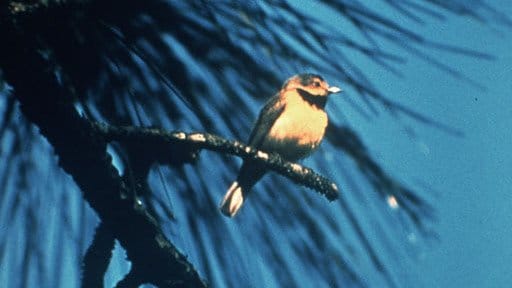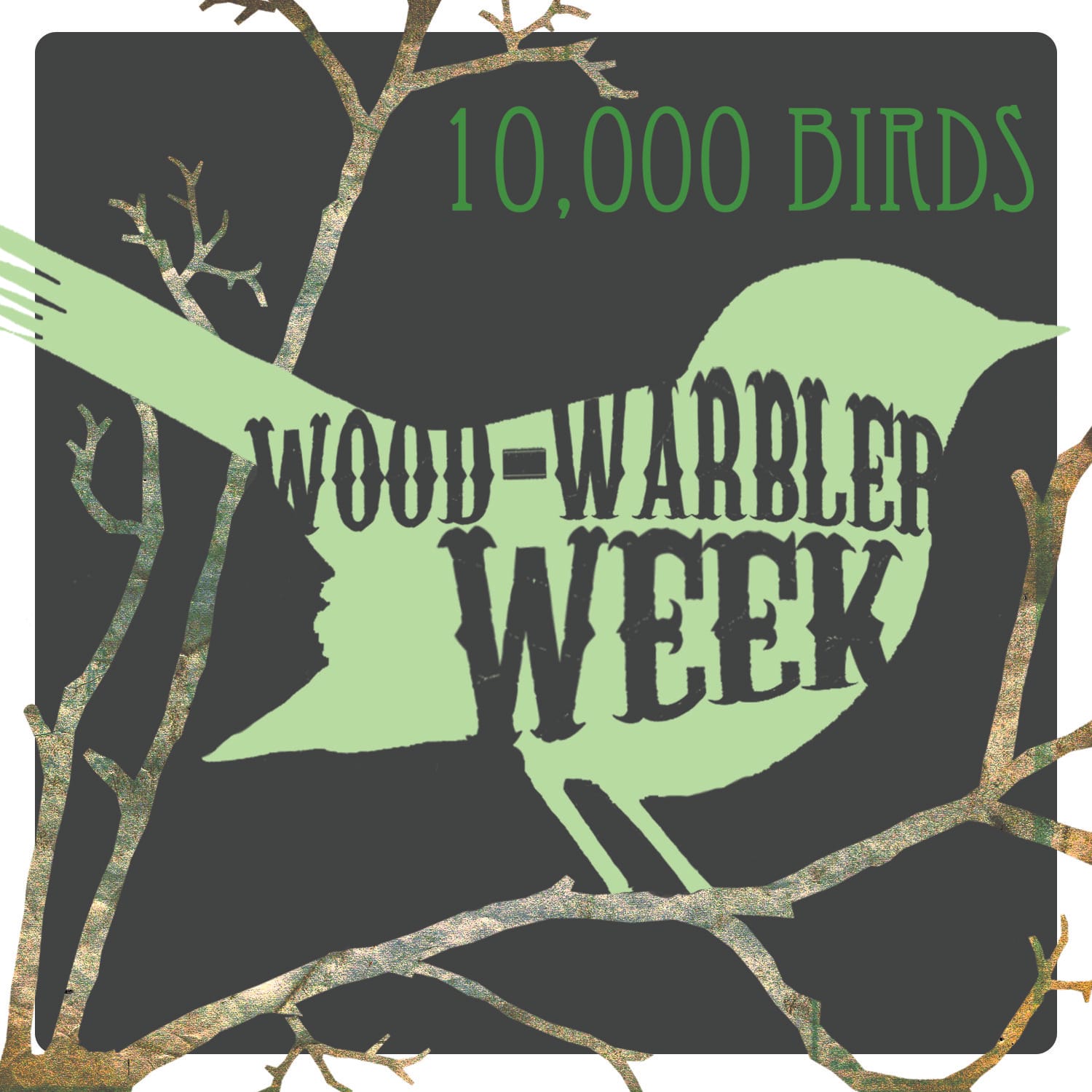Rightly or wrongly, there’s an hierarchy of extinct birds in North America, in the United States in particular. Each offers a portrait of a nation at a crossroads, a series of Aesop’s Fables – most well-known by anyone with an interest in birds or nature – for a nascent environmental movement whose themes become more or less relevant in the public mindset depending on what issues need to be addressed. There’s the one about the pigeon that represents a young nation’s disgraceful squandering of its seemingly unlimited resources. The one about the parakeet that represents the loss, before we even knew it, of an element of our wild places that seems so outlandishly foreign as to be unimaginable now. The one about the woodpecker that represents a glimmer of hope that we didn’t really screw it all up after all, however desperately faint that glimmer is anymore.
But there are others too, farther down on the list and mostly forgotten. A weird mussel-eating duck. A slight, transhemispheric curlew. And a warbler from the Southeast United States who came on the scene and left again so rapidly that it’s near to unknown in the ornithological record.
The species is said to have never been common, a description I’ve always thought is applied too liberally to long-gone species almost as a convenient declaration of helplessness or shrug of the shoulders toss off in the face of its eventual demise. What could we have done? After all, it was never common. But it was present, and in a place and time that suggested that it would always be so if in small numbers. Certainly warblers have faced long odds before. Why is this one different?
Bachman’s Warbler was named for the renowned southern naturalist, Rev. John Bachman. Bachman’s story is fascinating in itself. As a social reformer in antebellum Charleston, South Carolina, his influence in human rights circles – he insisted on educating African slaves and had an integrated congregation in Charleston, the cruel heart of the slave industry, before the American Civil War – loomed as large as his influence in the local natural history scene, which was significant. He discovered the little black-bibbed warbler in 1832 in the canebrakes of coastal South Carolina on one of his frequent outings, collected it, and sent the skins on to John James Audubon who eventually named the species he would never see after his friend.

Photo by Jerry Payne, Charleston Co, SC, 1958
The species disappeared from the record for several decades afterwards due to the war and all, but it popped up again in the mid-1880’s where it was reported to occur in decent numbers across much of the southeast all the way west to the Mississippi bottomlands of southeast Missouri’s bootheel. Apparently, wherever there was slightly open forest with a dense understory of Giant Cane, Bachman’s was found. But in the early 20th century industry came even to the sleepy south and the pine forests that stretched unbroken were felled to feed the fires of industry as too often is the way of things. Up until 1930, Bachman’s were regular. After that, they became significantly less so.
Things were not going too well in their wintering range either. It’s not known for sure whether the entirety of the population of the species always wintered on the island of Cuba but by the time people cared enough to find out that’s where they were going. As is the case when any vulnerable species is concentrated in one critically important part of the world, this is not a positive development for its well-being. A series of incredibly destructive fall hurricanes in the early 1930s likely took a heavy toll.
By about 1940, reports began to come saddled with the depressing qualification “last certain”. From Cuba in 1940. In Missouri in 1948. Mississippi in 1949. Florida in 1951. A few persisted in Rev. Bachman’s Charleston into the 60s when a solitary male in 1962 sang for no one but a group of incredibly fortunate birders.
Dribs and drabs through the 80s. Nothing but ghosts since.
What does it mean for any of us that the Bachman’s Warbler is gone? Sadly, probably not a lot. North America certainly doesn’t want for wood-warblers, many of whom are more dramatic that the little canebrake dweller. But there’s light in this darkness in that we might justifiably point to the relative success of the equally habitat obligated Kirtland’s Warbler as an example of how we’ve learned a thing or two about ecosystem management both here and abroad from the loss of the Bachman’s. So even though the Bachman’s Warbler probably sits near the bottom of that unfortunate hierarchy, its demise may have the most long-term significance.
And that’s a comforting bit of irony that anyone can appreciate.
————————————————————————————————————————————————
 This week, 8 May – 14 May 2011, is Wood-Warbler Week on 10,000 Birds! Though wood-warblers, the mostly brightly colored birds of the family Parulidae, are only found in the New World we felt that birders the world over would be pleased to see a plethora of posts about these striking and sought after species. Though we are devoting a whole week to wood-warblers we really are only just barely scratching the surface of possible topics involving this amazing family of birds.
This week, 8 May – 14 May 2011, is Wood-Warbler Week on 10,000 Birds! Though wood-warblers, the mostly brightly colored birds of the family Parulidae, are only found in the New World we felt that birders the world over would be pleased to see a plethora of posts about these striking and sought after species. Though we are devoting a whole week to wood-warblers we really are only just barely scratching the surface of possible topics involving this amazing family of birds.
Right now great flocks of wood-warblers are making their way north from the southern United States, Mexico, the Caribbean, Central and South America to breed across the United States and Canada. Many other non-migratory species are living their lives across the neotropics, doing their best to survive and pass on their genes. Wood-Warbler Week is a celebration of all wood-warblers and we hope you join us in celebrating these absolutely wonderful birds. Read about them here but also get out and experience them. You won’t regret it!
————————————————————————————————————————————————













Brilliant, Nate! You’ve written a powerful paean to this lost warbler.
I’ve always felt that if there is an american bird extinction we may hope hasn’t happened it is that of this species rather than the IBWO. I wouldn’t be too surprised (but I would be delighted) to hear of a small population popping up somewhere.
Any thoughts as to whether or not Bachman’s Warbler was a “true” species? I”ve heard some compelling theories/arguments that this bird was a hybrid (hence the wide range, but limited numbers) or perhpas a sub-species of another southern warbler, the Hooded which it closely resembles. A third theory is that Bachman’s is like Golden-Winged Warbler, a bird that got genetically crushed by another very similar species (again looking at Hooded).
Very well done Nate!
@Mike- Thanks!
@Tai Haku- That would be nice, but I, for one, am not optimistic. There’s talk of potentially good habitat in Congeree Swamp in SC, but that’s a pretty heavily birded area and for one to hold out there would be unlikely.
@Will- I hadn’t heard that, but it’s intriguing. I wouldn’t peg Hooded as a potential sub-species, they look superficially similar but their songs and habits are really different, but the Golden-winged hypothesis is really interesting as GW and BW Warbler are the Bachman’s closest relatives. In light of the genetic similarities between Gold-wing and Blue-wing Warblers, could Bachman’s be the southernmost cline of a super-species?
@Robert- Thanks!
Beautiful Nate. I love how Bachman’s Warbler featured front and centre in the book, The Ghost with Trembling Wings by Scott Weidensaul. A wonderful book about the search for lost species, such as Bachman’s Warbler, IBWO, and the Thylacine.
But I digress. Wonderful job on the post.
Lovely piece. I hate how many of the extinct birds you mention are so overlooked.
I might be naive, but it seems possible the bird still exists. Some dedicated birders I know have conducted several searches for the bird (and found some other great ones while doing so!).
This is a beautifully written post, Nate. A highlight of warbler-week both in content choice and execution.